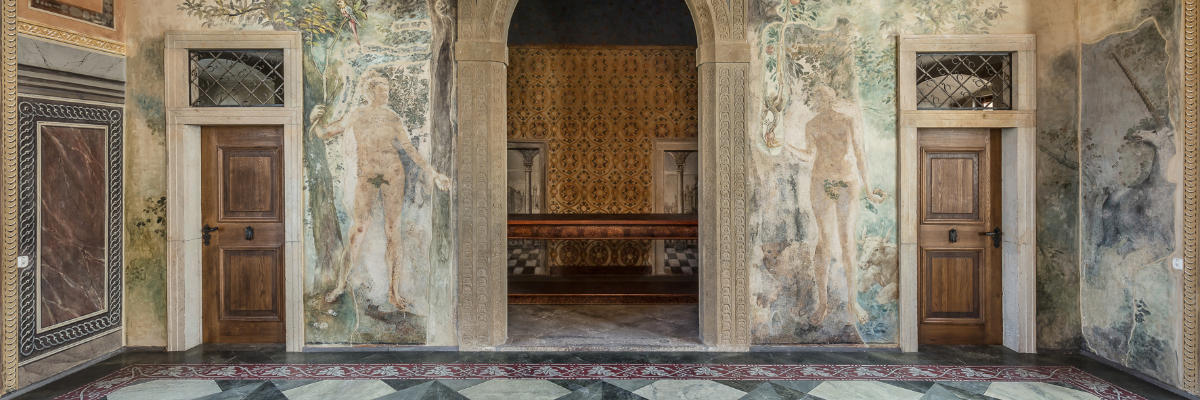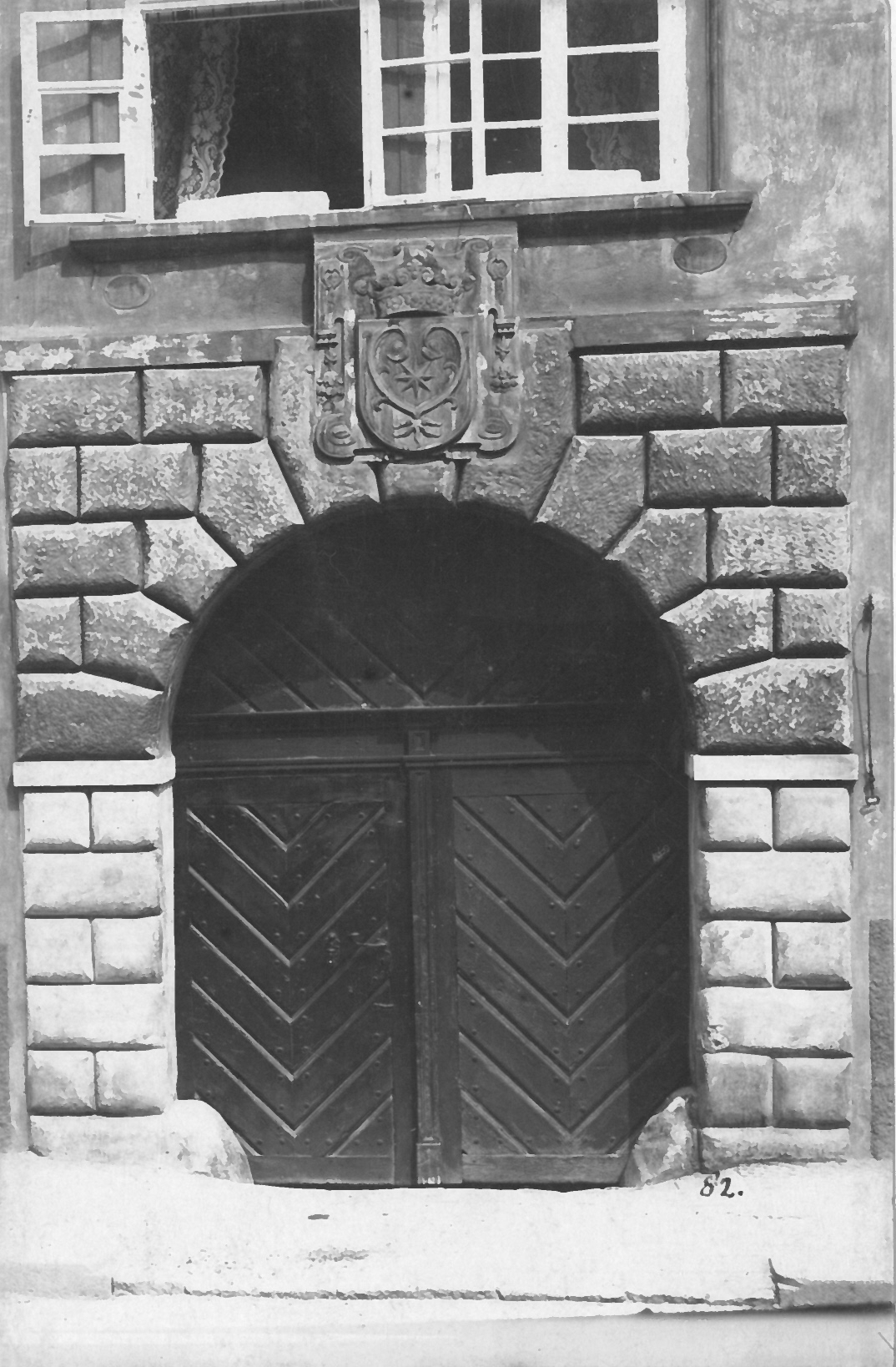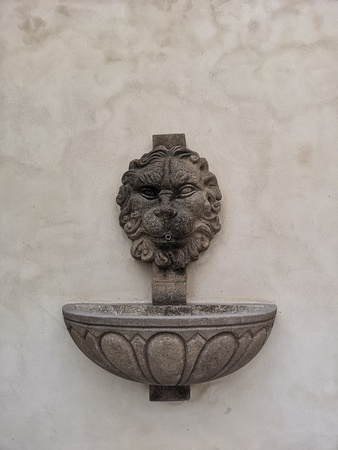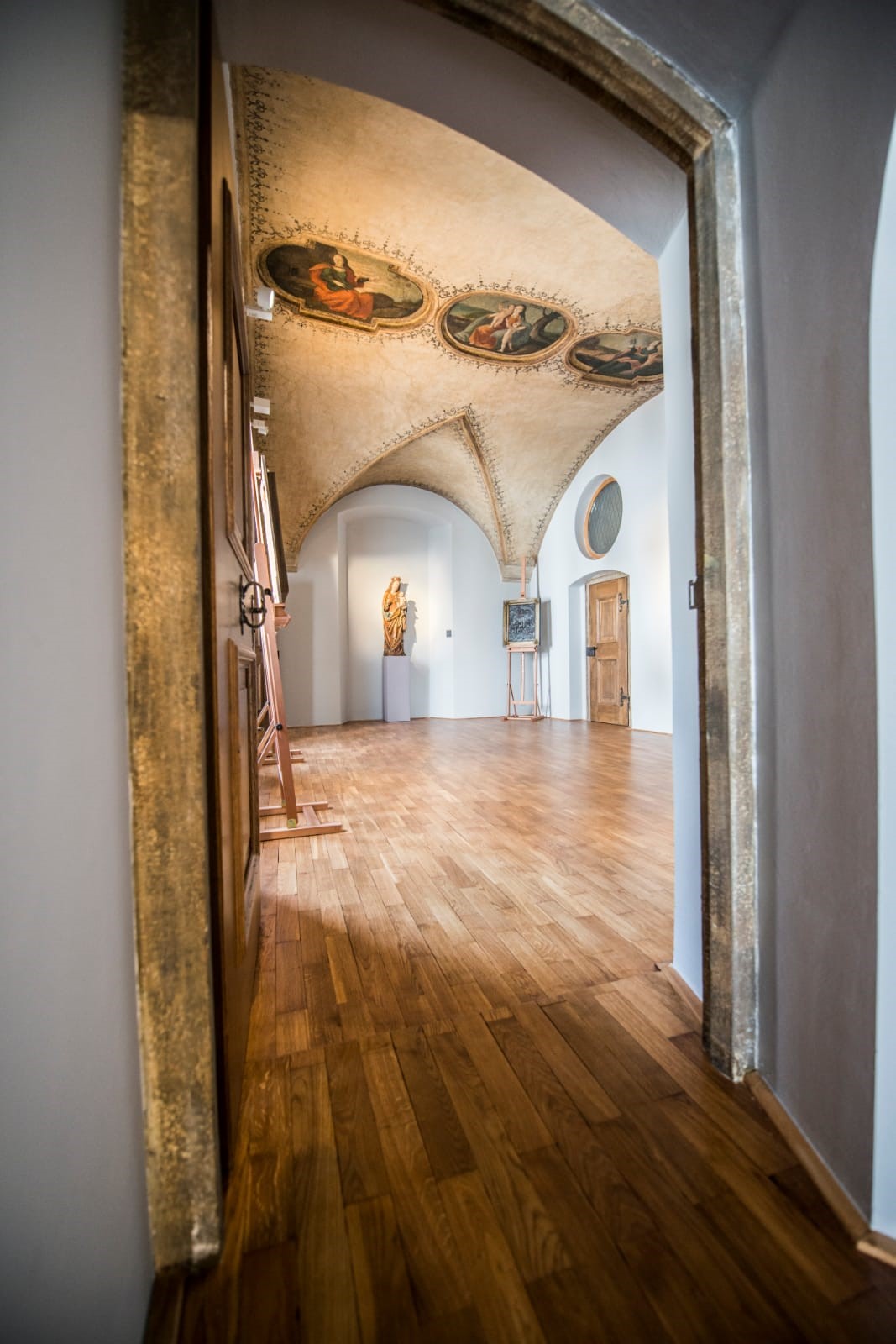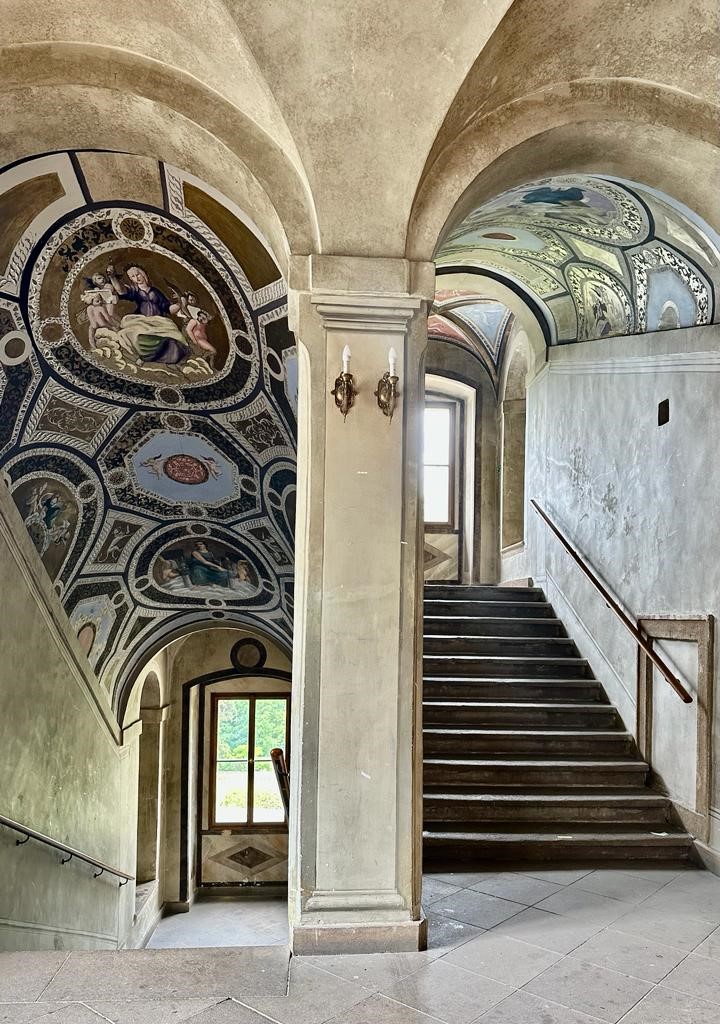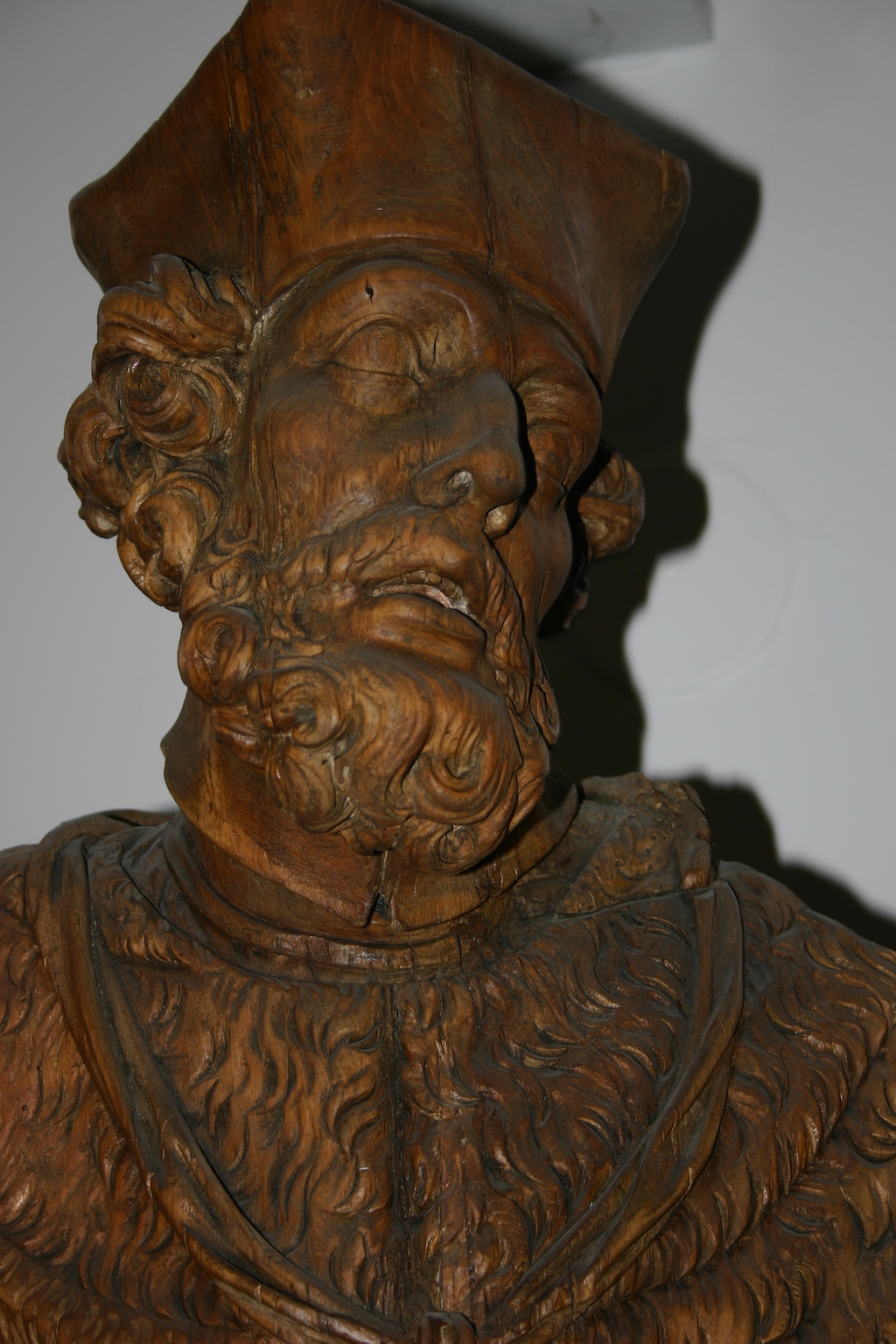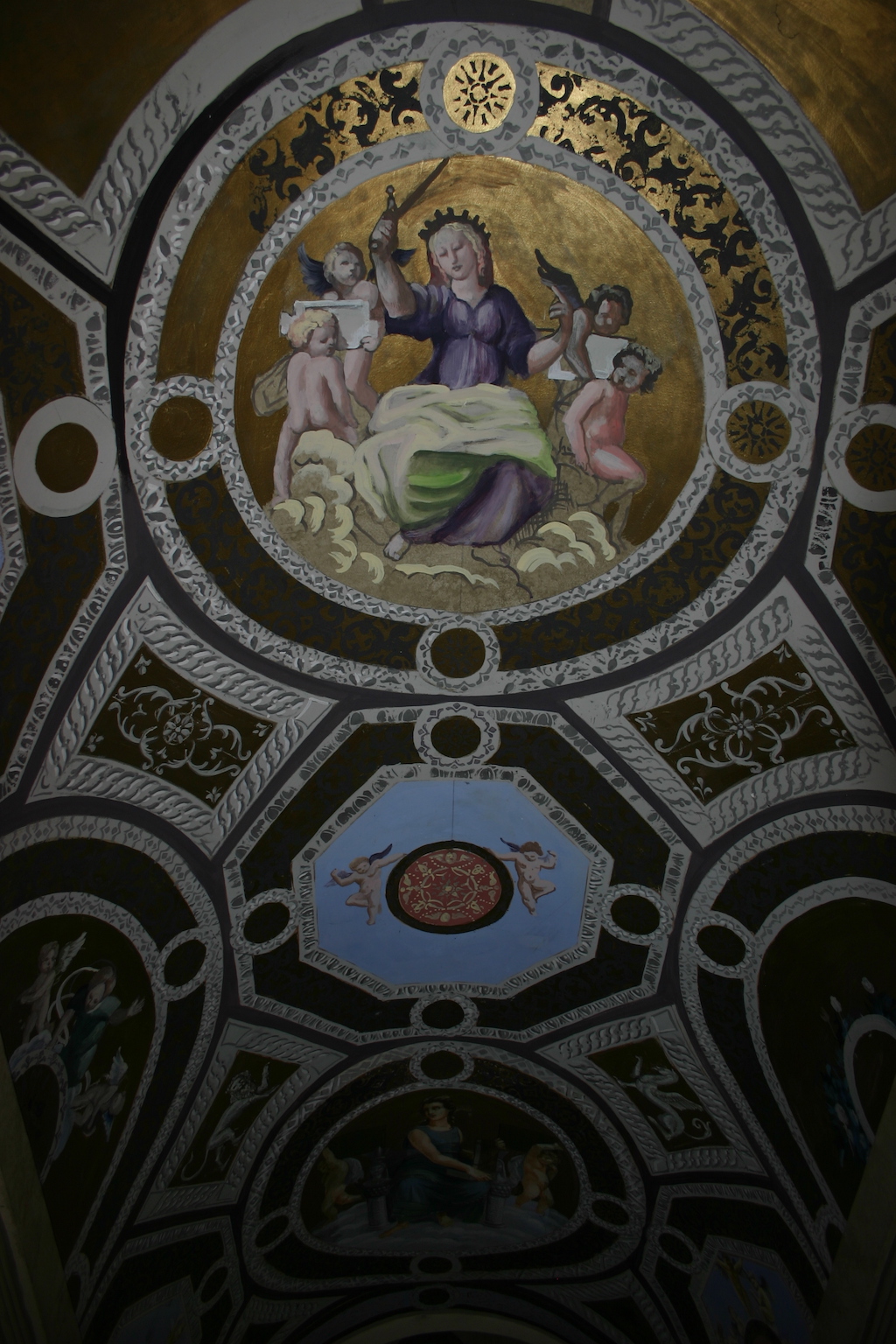Martinic palace
on the Hradčany square
One of the most beautiful late-Renaissance palaces in Prague, it was originally built in two stages separated by approximately eighty years, in 1550–1630, when a couple of older gothic houses were expanded and rebuilt. In the second half of the 14th century, four gothic buildings used to stand where the palace is today. One of them was owned by the famous chronicler Benesch of Weitmile who was commissioned by Charles IV. to oversee the construction of the St. Vitus Cathedral. Another house was occupied by lady Ofka, Queen Elizabeth’s lady-in-waiting. According to legends, she sometimes appears after midnight, accompanied by a burning dog. In 1541, both the Malá Strana, and Hradčany quarters were affected by a huge fire which laid complete waste to the buildings. Several years later, Andrew Teyffle of Zeilberg, bought the premises and started reconstructing them in the Renaissance style. In 1583, Teyffle sold the estate to George Bořita of Martinice, a provincial judge and later chief chancellor of the Kingdom of Bohemia, who immediately embarked on rebuilding the property. The palace was owned by the Martinic family until 1788, when the family died by the sword. The Martinicky Palace gained its current shape in 1618 when Jaroslav Bořita of Martinice, a nephew of the previous owner, began to rebuild it.
However, since Jaroslav Bořita of Martinice was defenestrated in 1618 along with other governors, the reconstruction was suspended and finished only in the 1730’s.
At this time, the building gained a new floor, the north wing with a large hall, and painted beam ceilings. The front façade was enhanced with a red marble plate with the Martinice coat of arms – a star and waterlily stalks with roots. It is richly decorated with exterior sgraffiti featuring three scenes created at the end of the 16th century and showing Joseph of Egypt. In the courtyard there is an elaborate sgraffito decoration of the deeds of Samson and the theme of the deeds of Hercules.
In the first half of the 17th century, a main hall was built on the first floor of the south wing. Apart from an original working fireplace, the hall used to also have a cassette ceiling. A chapel is attached and the original appearance of it is still preserved. Around the entrance paintings of Adam and Eve can be seen, inspired by Dürer’s work. Very interesting is the ceiling décor of the chapel’s arch with 4 sectors. The eastern side depicts the Holy Trinity with the Virgin Mary, the Last Anointing, the Last Judgment and St. George fighting the dragon.
Martinicky Palace is noteworthy not only for its sgraffito décor, but also due to a high number of well-preserved beam ceilings which were created during the second construction stage, dating back to the 1720’s and 1730’s.
In 1967–1973, the palace was reconstructed according to a plan developed by the architect Zdeněk Hölzel. The project was created for the Institute of the Chief Architect in Prague. During the reconstruction, the palace was partially rebuilt, and the Renaissance and early Baroque parts conserved, along with arches, painted beam ceilings and fresco or sgraffito décor.
The Konírna and its surrounding area used to feature glass sculptures by the glass-making artist René Roubíček which are now exhibited at the Museum of Decorative Arts in Prague. And it was here, in 1993, that American architect Frank O. Gehry first presented the now iconic Dancing House to the public.
created by Need4web s.r.o.
